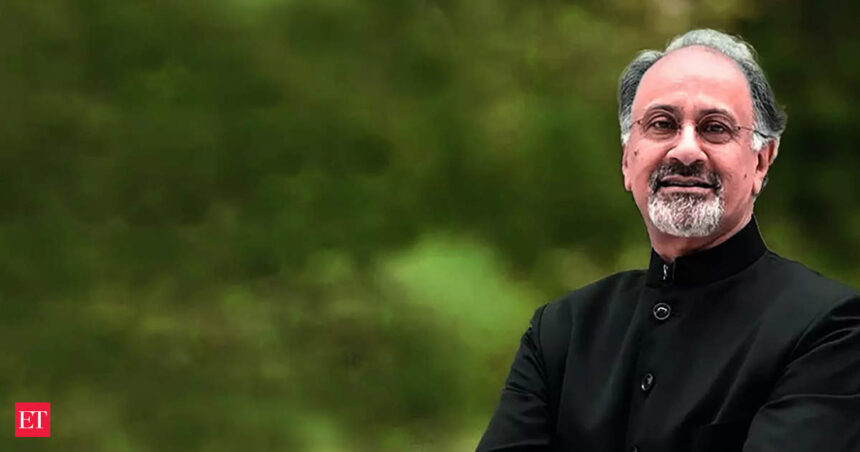Global economic growth is forecast to be slow. How do you see the impact of the latest crisis on West Asia?
Over the last three years, the world economy has been slowing down to a growth rate noticeably lower than what it was before 2020. The reasons are too much public debt, too little private investment, and the weakest trade recovery in five decades. Our forecast for this year is lower than last year’s growth, and for next year it is not much better. But even these projections should be considered optimistic; that’s what forecasters mean when they say that “risks are tilted to the downside.”That is because they assume that none of the known risks materialise. The problem is that the number of risks to the world economy has increased since 2021. Back then we worried about debt distress, pandemic outbreaks and economic fragmentation. When our Prospects Group provided its assessment two weeks ago, they listed nine risks. Now the risks include stubborn inflation, financial stress, and new conflicts. We were expecting the global economy to grow by 2.3%. Last week, one of the risks materialised. In 2023 and 2024, if the world grows by over 2%, we ought to be thankful.
Crude spiked soon after the conflict…
It did. But it hasn’t increased much after that. Our trade economists believe there are three ways to look at the effects of the war in Israel and Gaza. First, how it will affect Gaza’s trade. There were already many restrictions on trade in and out of Gaza, so the effects of the blockade would be small. Second, what will it do to trade through the Suez Canal. Their assessment is if there are new sanctions on Iran, there will be broader economic implications because Iran is the eighth-largest exporter of oil. Third, the economic consequences of greater geopolitical stress. If the war polarises the world further, its effects would be widespread and include commodity and capital markets. The price of oil is a good indication for how the market views the conflict. Right now, I’d say we are between the first and second scenarios.
The latest US inflation numbers suggest at least one more rate hike. What is your view?
Before the latest numbers came out, US markets were expecting inflation to go down, but it has stayed at nearly twice the target rate of 2%. The world cares about inflation in the US because it affects US interest rates, which influence capital markets globally. There is now a consensus that interest rates are going to be higher for longer, but there is less agreement about how much higher and how much longer. Based on history, I’d say not much higher than what they are now, but a lot longer than many people think expect.
The US and developed countries’ rising debts are seen as a big risk. What is your view?
We see it as a serious concern. Public debt in all larger economies has gone up since the pandemic because revenues came down and expenses went up. Now they are going up also because interest payments are more expensive. Where central government debt is relatively low, household, corporate and subnational government debt is not. If you add up all, this is the highest amount of debt we’ve ever had as a share of world GDP.
How much of a risk could these higher for longer interest rates coupled with appreciating dollar and high crude prices be for emerging economies like India?
Broadly speaking it would depend on how strong the national economy is, especially in monetary and fiscal aspects, and how much it is integrated internationally, especially in trade and finance. On the trade side, India is not super integrated, so it is relatively insulated from global developments. On the monetary side, India is in a good place. The RBI moved more quickly to tamp down inflationary pressure than did most advanced economy central banks. If there is a weakness, it would be on the fiscal side, especially if you include subnational public finances.
India’s public debt is above 80% of GDP. It is financed domestically so there’s no likelihood of a debt crisis. But high interest rates can squeeze government budgets and reduce ‘fiscal space’ -funds for public investments. There is another problem: when government borrows domestically, it makes borrowing harder for private enterprises.
A related risk is that when banks and other FIs consider government securities as a good bet, their portfolios become heavy with them. In such conditions, when interest rates go up, the bank is holding too much government debt, this creates a balance sheet problem because the bank’s assets are now worth less. Then you must start to worry both about private firms which can’t get credit and the banking sector because it can’t lend as much as it could. All three-private investment, financial stability, and fiscal space-are manageable in India. But the global economy is getting weaker and riskier, and these need attention.
The world has seen an increase in protectionism, and fragmentation with terms like friend shoring and nearshoring being cited to diversify supply chains. What does this mean for the global economy?
Bad things. Trade is good for growth and trade and investment restrictions reduce trade and standards of living. These restrictions have tripled between 2019 and 2022 and are set to increase again this year. Subsidies that were illegal a decade ago are now commonplace. When I’m asked why the referee – WTO – does not blow the whistle and call a foul when a government restricts trade or provides subsidies, I always ask how a referee can stop a team from scoring own-goals. Governments have to stop restricting international commerce because it is almost never good for the people they are trying to help.
India has been trying to be an alternate investment destination. Is it working?
Since 2018 when the US increased tariffs on goods made in China, several economies have increased their share in US imports. India is one of them. The other side of the trade coin is FDI and India has attracted foreign investment. But smaller countries, economies like Vietnam and Mexico, have done much better. The objective of US and Europe is to reduce economic dependence on China by diversifying its imports. India’s share in their imports can go up a lot before they become concerned about relying too much on India.
Do you see China continuing to remain the growth engine of the world going forward?
China’s growth rate will slow down as it becomes a high-income economy, but its contribution to world growth will remain big. To see why, compare China’s contribution to the world economy. Fifteen years ago, its GDP was $5 trillion, and growth rate nearly 10%. This year, China’s GDP is nearly $18 trillion, and its growth rate is expected to be about 5%. Expect China to be the biggest contributor to global economic growth for a while.









